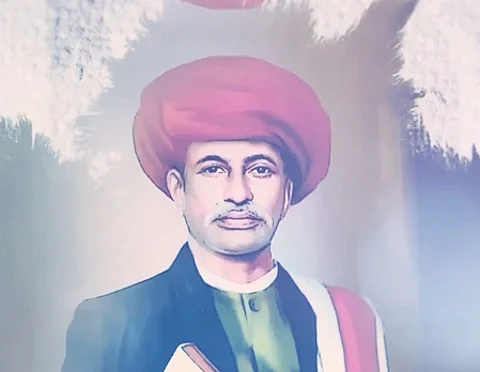

When the Central Board of Film Certification (CBFC) asked the makers of Phule — a biopic on Mahatma Jyotiba Phule and Savitribai Phule — to remove caste-related terms like Mahar, Mang, Peshwai, and Manu’s caste system, student activist Priyanshi Arya was not surprised.
“They cannot tolerate even the name of our leaders,” she said. “They couldn’t stand Phule then, and they can’t stomach him now.”
The film, directed by Ananth Mahadevan and starring Pratik Gandhi and Patralekha, was set to release on Jyotiba Phule’s birth anniversary today, April 11. But amid objections from Brahmin groups, the release has been delayed. The board’s directive, citing “sensitive terms”, has raised sharp questions about historical erasure and the discomfort mainstream India still feels when faced with caste truth.
For many, it felt like the latest in a long pattern. A film that sought to honour one of India’s fiercest anti-caste reformers is being edited to appease the very system he spent his life dismantling.
Priyanshi Arya, President of the Birsa Ambedkar Phule Students’ Association (BAPSA) at Jawaharlal Nehru University (JNU), doesn’t mince words. She speaks of Phule not as a distant figure from history, but as a living ideological presence, still threatening to the caste order today.
“Phule didn’t just critique caste,” she said. “He tore apart the religious foundations that upheld it. He said the Vedas were idle fantasies, fantasies created to legitimise inequality. That critique is unbearable for Brahminical consciousness, even today.”
Her concern isn’t only with the CBFC’s cuts. Even before the controversy, she says, the community had doubts: Would the film dare to show Phule as he was? Uncompromising, radical, loud? Or would it present a softened, sanitised version palatable to savarna sensibilities?
“Even a paraphrased portrayal of Phule is intolerable to them,” she said. “They want to erase his name, his anger, and his vision. They want to erase our memory.”
One of the most debated changes is the replacement of a historically grounded visual — a man with a broom tied to his waist, a reference to untouchability under Peshwa rule — with a more ambiguous scene of boys throwing dung at Savitribai. Student activists say such changes are more than cosmetic; they’re consequential.
“Those symbols meant something,” said Rahul, who is a part of a prominent Ambedkarite student association. “They told you what caste really looked like. Without them, the film loses its sting.”
Rahul doesn’t oppose the film itself. In fact, he was eagerly awaiting its release, having known of its production for over a year. But he now fears that what was once an opportunity to bring Phule’s story to the masses might become yet another case of diluted representation.
“There’s so much the public doesn’t know,” he said. “Even I didn’t learn about Phule till later in life. Films like this could’ve been a powerful introduction. But if you cut out the truth, people will leave the theatre having learned almost nothing.”
He cites another historical practice as an example of what gets lost when sanitisation replaces specificity: untouchables being forced to wear pots to collect their spit. “Visuals like that hit you. They teach you in ways books sometimes can’t. If you remove all that, what’s left?”
If Priyanshi sounds jaded, it’s because she’s lived the reality of caste oppression. She recounts how her father and uncle were repeatedly told to leave the neighbourhood they built their home in, simply because they were Dalits living among upper-caste families.
“This society is rotten to its core,” she said. “They expect us to bend with broken backs. But now that we stand with our spines straight and our heads held high, they retaliate harder.”
For her, the worst outcome of this censorship is not merely what the film omits, but what it permits. “By softening Phule’s critique of Hinduism, the film risks sustaining the very caste order he fought to destroy.”
Rahul, by contrast, holds on to a quieter kind of hope.
“Yes, the originality is lost,” he admitted. “But if someone learns about Phule and Savitribai for the first time, even in a limited way, that still matters. Something is better than nothing. We need to talk about these things, or they’ll disappear completely.”
In a country where Phule’s name still isn’t widely known, especially in North India, censorship does more than mute a film. It erodes memory, and distorts legacy. And at a time when statues are garlanded but ideas are gutted, student voices are drawing a line in the sand, echo the students.
Phule’s story, they insist, cannot be told without discomfort. Because caste is not a comfortable truth. And any version of his life that is stripped of rage, critique, or clarity, may wear his name but it does not carry his legacy, they conclude.
